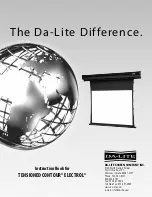
700-DTS-12 Rev. 28 - 16 Apr 2020
Page 1/28
Chapter 1
OPERATION
1.1
General description
The FTS DTS-12 Turbidity Sensor (DTS-12) measures turbidity and suspended solids concentrations in
liquids. The method used is called optical back scatter and employs a detector at 90 degrees to the
incident light beam. Light is emitted into a liquid medium and any amount of reflection detected from
suspended matter is a measure of the turbidity of the medium. To achieve this result, the latest in
micro power, solid state, and infrared laser technology is used. The laser light output is modulated
and synchronously detected so that any effects from ambient light conditions are minimized. The
measurement range of the DTS-12 is 0 to 1600 NTU, making it ideal for stream and river applications.
The DTS-12 has a built-in wiper that is useful for reducing the effects of silt build up and biological
fouling of the sensor optics. The DTS-12 is factory programmed with turbidity calibration coefficients.
The micro controller applies these coefficients to the raw measurement data and computes mean,
median, maximum, minimum, variance, and BES (Best Easy Systematic estimator). All turbidity data is
returned in NTUs (Nephelometric Turbidity Units).
All control and measurement functions of the DTS-12 are initiated by sending it an SDI-12
command.
Figure 1-1: DTS -12
1
SDI-12
=
Serial Data Interface at 1200 baud. It is a standardized protocol that defines how microprocessor based sensors can
communicate with data loggers





































